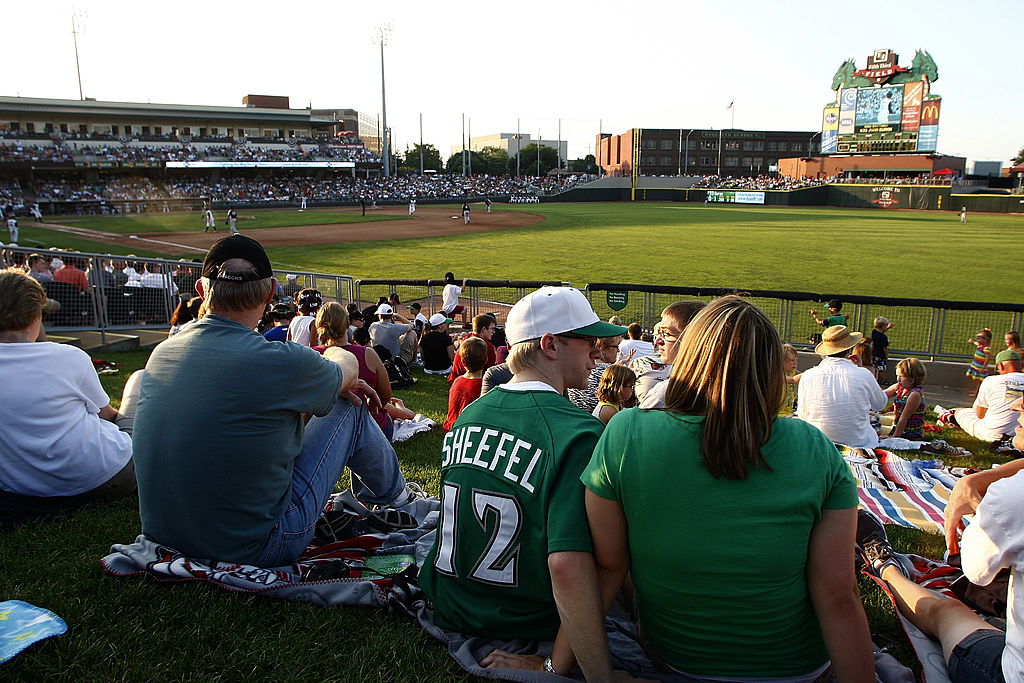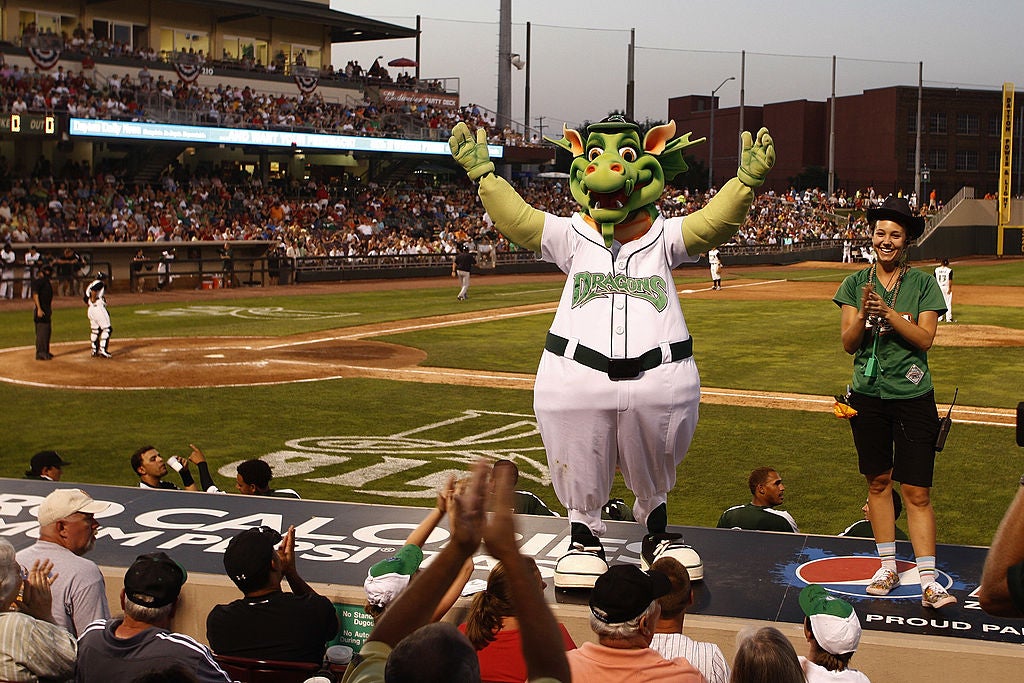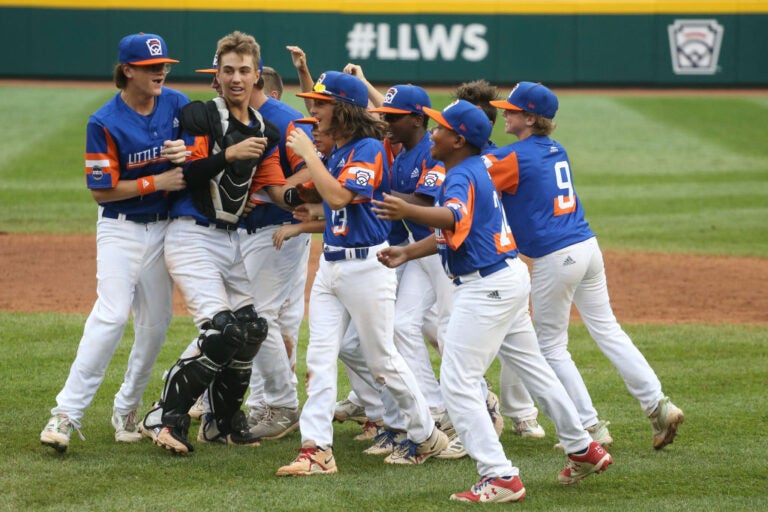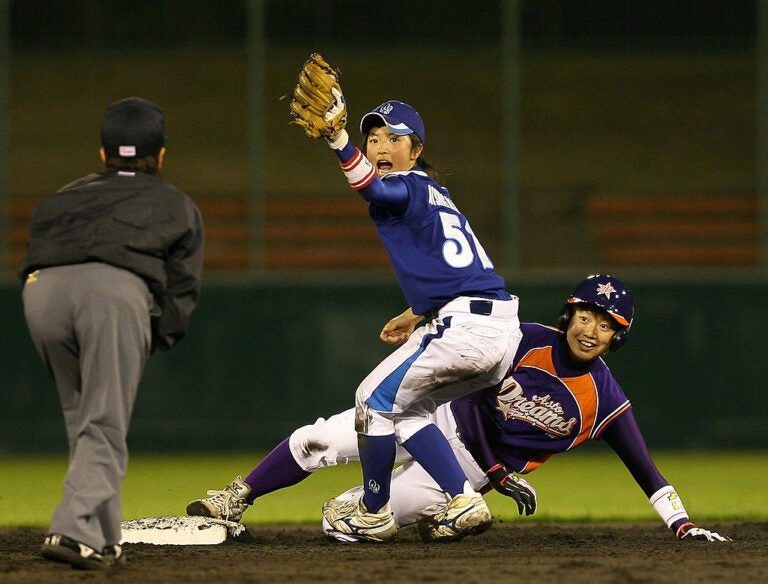Following Contraction, Minor League Baseball Is Smaller. But Is It Better?
Why this matters
To save money and streamline operations, Major League Baseball recently reorganized its minor leagues, cutting ties with 42 franchises while promising greater support for the players and teams that remain. In the aftermath, contracted clubs have scrambled to survive, minor league players continue to fight for better salaries and working conditions, and the sport’s identity – American civic institution or private plaything? – remains in flux.
At the end of the 2019 season, Chris Almendarez, the president of the Houston Astros’ Triple-A affiliate, had a brilliant idea: His team, the Round Rock Express, should buy up a ton of Astros merchandise to sell to local fans the next summer. After all, Houston was World Series-bound, and there had never been a bigger appetite for Astros gear in Round Rock, Texas. So Almendarez put in an order and planned for massive sales at the start of the 2020 season.
Problem was, the season never started. The coronavirus pandemic yielded a lost year for minor league baseball. Fine, Almendarez thought. He’d sell the stuff in 2021, when fans decked in navy and orange would be even more eager for new gear.
But there was one potential roadblock to Almendarez’s new plan: On Sept. 1, 2020, the Professional Baseball Agreement between Major League Baseball and Minor League Baseball expired. Looking to streamline operations and cut costs in a system where profits can be slim, MLB took full control of its developmental arm, promising a more streamlined and uniform system – and contraction, from 162 teams to 120. Affiliates wondered not only if they’d get to play in 2021 but also which team’s farm system they’d end up in. “It's kind of like musical chairs,” Almendarez says. “There’s a last man standing.”
Almendarez was certain the Express would wind up affiliated. The team had robust pre-pandemic attendance, and the ownership group includes Baseball Hall of Famer Nolan Ryan. With that in mind, Almendarez waited. Oct. 1 passed. Nothing. Then Nov. 1 came and went. Finally, on Nov. 16, Almendarez and his girlfriend were eating dinner at Jack Allen’s Kitchen in Round Rock when a Houston reporter sent an ominous tweet: The Astros had purchased an ownership stake in the Sugarland Skeeters and intended to make the independent team its new Triple-A affiliate. Almendarez rushed home to take questions from local media on Zoom, but he had few answers. The Express still hadn’t heard a peep from MLB.
They wouldn’t until December, when the league issued the team an invitation to affiliate with the Rangers and compete in the new Triple-A West. It accepted, and within days, the minor leagues were entirely reshaped. More than 40 ballparks across America were left without affiliated baseball. The amateur draft was slashed in half, and hopeful high schoolers and college players faced a more challenging path to their dream. But to its remaining affiliates, MLB promised consistency. It guaranteed 10-year contracts between clubs, hiked players’ wages, implemented regional schedules, and dangled the prospect of investment in player development and facilities.
“If you want to play baseball,” Almendarez says, “these are the new rules.”
Not everyone in and around the minor leagues is so accepting of this shift. Many fans have blamed MLB for kicking the minors when they were down, following more than a year of empty seats. Politicians have railed at the economic losses contraction might incur. And scores of players have bemoaned the downside: shrinking opportunities and raises that seemed dollars too little and years too late. From all sides, there have been calls to save the minors, to save baseball. It’s a noble-sounding mission that’s also deeply confused. Because no one – not politicians, not team employees, not players – can agree on what that entails, or even what exactly needs saving. Is Minor League Baseball a civic institution? A full-time workplace? A talent development pipeline? Or is it simply the private plaything of a billion-dollar industry?
The answer – and, arguably, the future of a venerable enterprise – depends on whom you ask.
Political Baseball
One phrase goes a long way toward explaining minor league baseball’s identity crisis: America’s pastime. Coined in the 1850s, it transcends the major leagues. It brings to mind films such as “Field of Dreams” and “Bull Durham,” a kind of grassroots fantasy of the role baseball plays in our national identity. No sport is as tied up in Americana, and therein lies the first seed of discord, of difference, of fundamental misunderstanding. Baseball must coexist as a business and something else, something patriotic and wholesome and essential.
And that at least partially explains why elected officials have spent so much energy over the years into baseball: granting it an antitrust exemption, threatening to snatch it away any time MLB acts out of line, holding hearings, equivocating. Which brings the story back to contraction. In October 2019, news of the 42 dissolved affiliates broke. Within weeks, more than 100 members of the U.S. House of Representatives had sent a letter to MLB commissioner Rob Manfred, asking him to stand down. A month after that, three mayors of minor-league cities formed a task force to try to halt MLB’s proposition – to push for their version of saving baseball.
Nan Whaley, the mayor of Dayton, Ohio, was one of the task force’s original members. Her city’s team, the Cincinnati Reds’ High-A affiliate, wasn’t on the chopping block, but she was still concerned. “I think [MLB] missed the point,” she says, calling contraction a series of “unilateral decisions without any kind of input.” Whaley’s concern was for the economic well-being of small and mid-sized cities across the country, and she points to the Dayton Dragons as a success story, an example of how much bigger baseball is than just a sport. It is, she says, a means of investing in communities.

Whaley calls Day Air Ballpark the “living room” of her community. The city has held naturalization ceremonies there, she says, and in 2019, the park hosted a ceremony recognizing first responders after a mass shooting. It also has spurred development in downtown Dayton, and the games and events it hosts are affordable entertainment for families in the area.
“You go to a minor league game, and kids get their hotdogs, and the ballplayers are often very nice and they'll sign autographs and kids, you get good seats for a couple of bucks,” Vermont Sen. Bernie Sanders, a longtime baseball fan and opponent of contraction, told NPR’s Weekend Edition in March. “Minor league baseball is enormously important to dozens and dozens and dozens of communities all over this country. … And I am really outraged that at a profitable institution like Major League Baseball, these guys want to eliminate baseball in so many communities around this country.”
Such talking points are common among politicians, team owners, and executives across the minor leagues. They view the minors as a kind of public good, steeped in history – which made contraction all the more galling. To them, it was a problem of access, of fans losing teams and cities giving up established revenue sources.
And there’s no denying their point. This round of contraction marked an end, or at least an interruption, for many cities with storied baseball pasts. Hagerstown, Maryland, went without pro ball this summer for the first time since 1896. Burlington, Iowa, which had hosted a professional league most summers since 1889, is now home to a collegiate summer league. So is Bluefield, West Virginia, a town that straddles the state’s border with Virginia and had hosted affiliated minor-league ball since 1937.
Still Going
Contraction certainly reduced MLB’s direct involvement in minor-league cities across America. But baseball didn’t up and disappear from all that many places. It just looked – different. Maybe younger. Maybe wonkier. Perhaps a bit less refined. Summer collegiate leagues – unpaid opportunities for college players to compete in front of pro scouts – needed homes, and many contracted teams kept their names, logos, and colors and began recruiting undergraduates. Others found themselves competing in one of the four Official MLB Partner Leagues, which don’t have direct affiliations with big-league clubs but do collaborate with MLB to grow the game. One partner, the Atlantic League, has become a kind of idea lab for rule changes like the robo-umpire, larger bases, and a pitching mound that’s set back an extra foot from home plate.
Related: Arizona's Cactus League: A Product Of A Racist Incident
In 2023, the Atlantic League will go to Hagerstown, thanks to a local ownership group leading a new, publicly funded downtown ballpark. That plan took deep pockets and a bill that unexpectedly passed in the state legislature. But holding onto baseball post-contraction isn’t always so complicated – or expensive. In Burlington, Vermont, which Sanders calls home, a Canadian ownership group stepped in last year when MLB dropped the Lake Monsters, the local Class-A team. The group purchased the club, which spent years affiliated with the Montreal Expos, and found it a home in the Futures Collegiate Baseball League (FCBL). C.J. Knudsen, the Lake Monsters’ president, came aboard in March to help ease the transition; in two months, he recruited a roster, lined up host families for players, and helped get 115-year-old Centennial Field ready for action after 638 days without baseball. “We were opening up concession stands, figuring out what equipment works, what doesn't work,” Knudsen says. He also had to rebuild the team’s front office after pandemic layoffs – and after all that, the Lake Monsters won the FCBL championship in August.
Baseball, saved – at least by one definition of the verb. America’s pastime as a civic institution is alive, if not entirely well, whether or not MLB wants to be directly involved. But minor league baseball, the business, remains a broken system, and saving it has already proven a thorny proposition.
Labor Squeeze
In 2016, U.S. Reps. Cheri Bustos (D-Ill.) and Brett Guthrie (R-Ky.) introduced a bill in Congress that would have exempted minor-league baseball players from federal wage laws. The bill stipulated that players were seasonal workers and thus not eligible to collect overtime on top of their minimum wages. The bill purported to help teams in precarious financial situations, and it faced immediate backlash. Bustos dropped her support almost immediately, and the bill, called the Save America’s Pastime Act, went nowhere.
That should’ve been that. But two years later, when Congress passed a $1.3 billion spending package, the proposition resurfaced, buried nearly 2,000 pages deep in the bill. It was signed into law, throttling minor leaguers’ already paltry pay. Saving baseball meant codifying players earning less than minimum wage for the total hours they work, and the best-paid players earning $15,000 annually, before taxes. Historically, most earn far less, and many lower-tier players live below the poverty line, with host families, or in cramped spaces with teammates, often sharing a single bedroom.
The Save America’s Pastime Act was intended as a means of halting talk of contraction, which it did – but for only a few months. Its only legacy has been deepening the mistreatment of players, whose calls for reform have grown louder; to them, fair wages are the key to preserving the minor leagues. Garrett Broshuis, who spent six years in the San Francisco Giants’ farm system, is leading a class-action lawsuit in which thousands of former players are suing MLB for its alleged failure to pay them a fair wage, overtime pay, and compensation for other required activities, like spring training, for which minor leaguers receive no wages. The suit is set to go to trial in June, eight years after its inception.
Broshuis is also a co-founder of Advocates for Minor Leaguers, a nonprofit that works to give players a collective voice to fight for fair working conditions. Last month, it spearheaded a quiet protest, distributing teal bracelets printed with the hashtag #FairPlay to players on the Philadelphia Phillies’ and New York Mets’ High-A affiliates. The Jersey Shore BlueClaws and Brooklyn Cyclones sported the bracelets on Sept. 18 in their final game of the season, and the next night, Phillies outfielder Andrew McCutchen wore a bracelet in solidarity on national television. McCutchen is in the final season of a three-year, $50 million deal, which means he makes nearly 1,400 times as much money as the players on the BlueClaws and the Cyclones – even after the raises MLB granted them this season using cost savings from contraction.
"I am hopeful that things will change them and soon the days of cramming six guys into a two-bedroom apartment will be over.” - C.J. Knudsen, Vermont Lake Monsters president
And here’s more disappointing math: Those raises count for only a fraction of the cost-savings MLB, which made $10.7 billion in revenue in 2019, milked from its elimination of 42 minor-league teams. In 2019, the last season of the prior system, the minors brought in $864 million, 89 percent of which went toward operating expenses. Using those numbers as a benchmark, contraction saved MLB more than $100 million. The pay bumps the league promised players to sweeten the deal – raises from 38 percent to 72 percent _ account for just a small fraction of those savings.
It all comes back, again, to perception: America’s pastime, history, mythology. Unlike MLB players, minor leaguers have neither free agency nor a union. By contrast, minor league players in basketball and hockey do have union protection. National Basketball Association G League players make a minimum of $35,000 annually and receive free housing; player salaries in the American Hockey League, the primary minor league of the National Hockey League, start at $51,000. While MLB announced in mid-October they would require organizations to provide housing for all minor leaguers starting in 2022, which will reportedly cost less than $1 million per franchise per season, minor league salaries remain low. While minor league wages in pro basketball and hockey are still a fraction of what players make in the NBA and the NHL, they’re also solidly above the poverty line. There are no illusions in those leagues about saving the game or about players’ work being part-time or seasonal or anything but all-consuming.
An Uneasy Truce
Once the matter of the Round Rock Express’s 2021 affiliation was squared away, Chris Almendarez got to thinking. As part of the minor-league restructuring, teams would play more regional schedules, which meant his team would host the Astros’ new affiliate 24 times over the five-month season. In turn, that meant 24 opportunities to hawk those piles of leftover Houston gear. The team store blew through the boxes of merchandise, and thus one small hassle of these new minor leagues was solved.
Others won’t be so simple. Broshuis and the dozens of clients he represents in the class-action suit are waiting to go to trial. The minor leaguer-turned-attorney, at least, feels hopeful. “There are a lot of players who have been struggling for a number of years, but the problem has been especially acute in the COVID era,” he says. “But despite all of that, I am hopeful that things will change them and soon the days of cramming six guys into a two-bedroom apartment will be over.” It remains to be seen what a victory for the players would mean, or how it would force MLB’s hand and alter the landscape of the sport.
For now, though, the game will go on, settled in its latest uneasy truce. In Vermont, C.J. Knudsen will keep an eye on the careers of his new favorite college players, guys who won him over during their weeks with the Lake Monsters. He’s found the silver linings of post-affiliation life. In Round Rock, Almendarez faced down the challenge of marketing September games to fans whose children had returned to school; because of COVID, the minor-league season was delayed a month and extended into the fall. And in Dayton, Mayor Nan Whaley recently threw out the first pitch at a Dragons game, celebrating another year of strong attendance and a winning record.
To each of these total strangers, the minor leagues mean something different: a job, a cause, an economic boon. They care, but in different ways. Maybe someday they’ll all agree on one thing: Minor league baseball doesn’t need saving, exactly. It needs change, which has already begun.
Monthly Issue
Rediscovering America's Pastime
For baseball to survive as America’s pastime, the sport known for tradition and nostalgia will need to broaden its appeal across racial, cultural, and gender lines.
For the kid who swings a bat for the first time; the front office data analyst looking for the next big star; the minor leaguer hoping to make it to the bigs; and the major league manager looking to stay on top, can a centuries-old sport become more diverse and inclusive in new ways?




